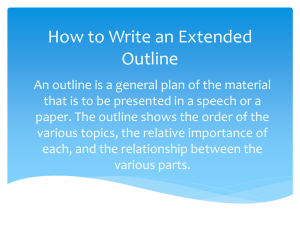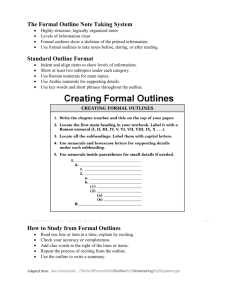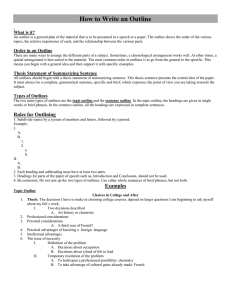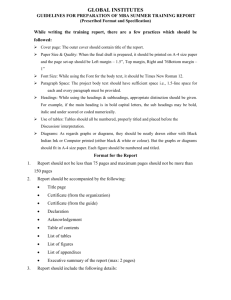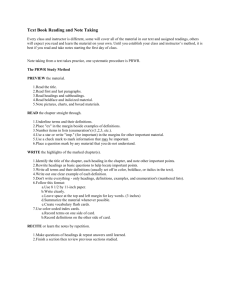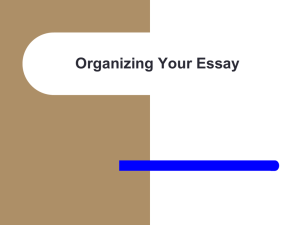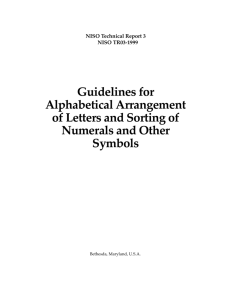Creating an Outline - University of South Alabama
advertisement
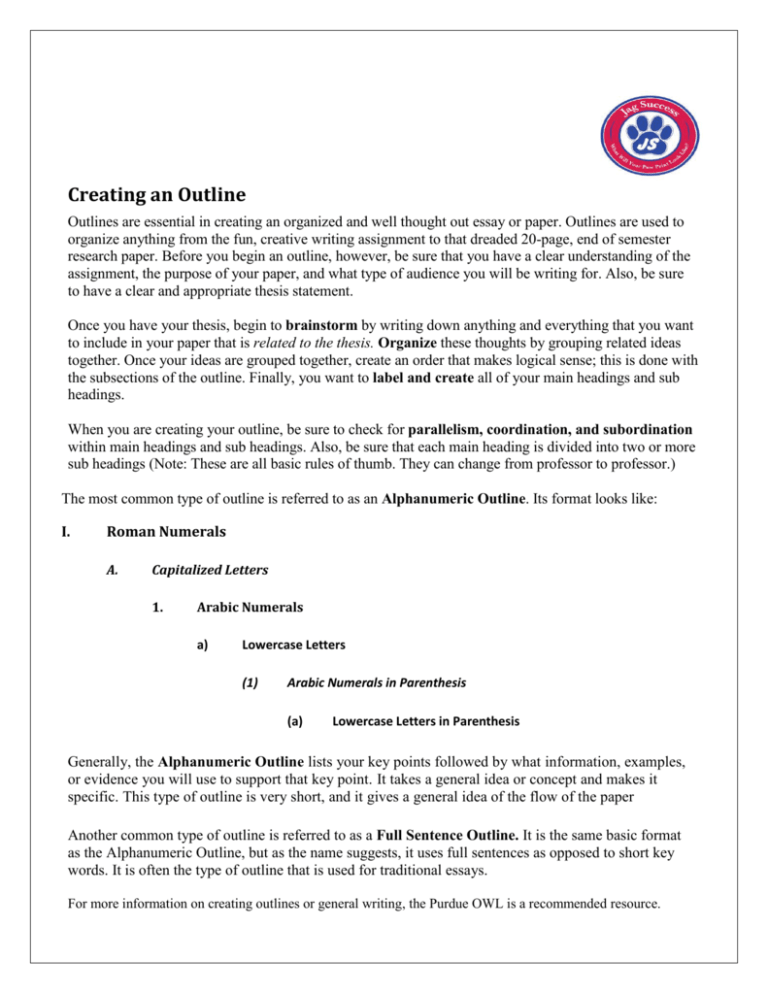
Creating an Outline Outlines are essential in creating an organized and well thought out essay or paper. Outlines are used to organize anything from the fun, creative writing assignment to that dreaded 20-page, end of semester research paper. Before you begin an outline, however, be sure that you have a clear understanding of the assignment, the purpose of your paper, and what type of audience you will be writing for. Also, be sure to have a clear and appropriate thesis statement. Once you have your thesis, begin to brainstorm by writing down anything and everything that you want to include in your paper that is related to the thesis. Organize these thoughts by grouping related ideas together. Once your ideas are grouped together, create an order that makes logical sense; this is done with the subsections of the outline. Finally, you want to label and create all of your main headings and sub headings. When you are creating your outline, be sure to check for parallelism, coordination, and subordination within main headings and sub headings. Also, be sure that each main heading is divided into two or more sub headings (Note: These are all basic rules of thumb. They can change from professor to professor.) The most common type of outline is referred to as an Alphanumeric Outline. Its format looks like: I. Roman Numerals A. Capitalized Letters 1. Arabic Numerals a) Lowercase Letters (1) Arabic Numerals in Parenthesis (a) Lowercase Letters in Parenthesis Generally, the Alphanumeric Outline lists your key points followed by what information, examples, or evidence you will use to support that key point. It takes a general idea or concept and makes it specific. This type of outline is very short, and it gives a general idea of the flow of the paper Another common type of outline is referred to as a Full Sentence Outline. It is the same basic format as the Alphanumeric Outline, but as the name suggests, it uses full sentences as opposed to short key words. It is often the type of outline that is used for traditional essays. For more information on creating outlines or general writing, the Purdue OWL is a recommended resource.




